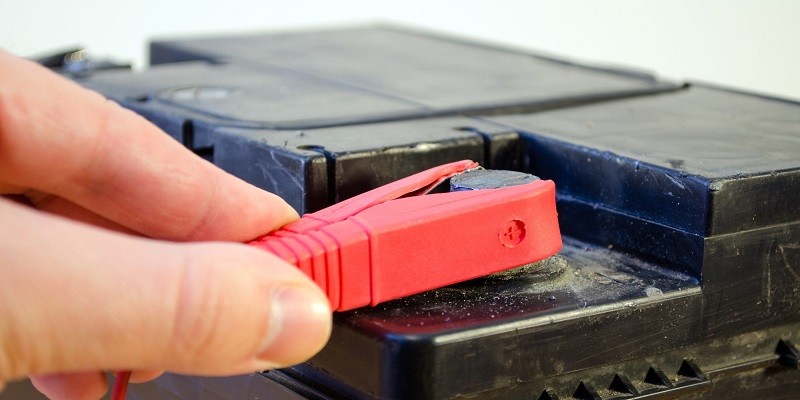Last Updated on January 15, 2025
To charge a lawn mower battery, connect the charger to the battery and plug it into an electrical outlet. Now, let’s delve into the process of how to charge a lawn mower battery.
Owning a well-functioning lawn mower battery is essential for a well-manicured lawn. However, to keep your lawn mower running smoothly, you need to know how to charge its battery adequately. We will guide you through the simple steps of charging a lawn mower battery effectively.
By following these steps, you can ensure a longer lifespan for your battery and the uninterrupted mowing of your garden. So, let’s get started and learn how to charge a lawn mower battery the right way.
The Basics Of Lawn Mower Batteries
Understanding how to charge a lawn mower battery is essential for maintaining its longevity. By following the proper steps, such as connecting it to a charger and monitoring the charge level, you can keep your lawn mower performing at its best.
Lawn mower batteries are essential for powering your equipment and ensuring smooth operation. To effectively charge a lawn mower battery, it is important to have a good understanding of the basics. From different types of batteries to the importance of regular maintenance, this section will provide you with valuable insights.
So, let’s dive in!
Different Types Of Lawn Mower Batteries:
- Lead-acid batteries: These batteries are commonly used in many lawn mowers. They are affordable and durable, making them a popular choice. However, they require regular maintenance and have a shorter lifespan compared to other types.
- Lithium-ion batteries: These batteries are becoming increasingly popular due to their lightweight design and longer lifespan. They do not require as much maintenance as lead-acid batteries and offer better performance. However, they are generally more expensive.
- Gel batteries: Gel batteries are a variant of lead-acid batteries. They contain a gel-like electrolyte that eliminates the risk of acid spillage. They are maintenance-free and have a longer lifespan compared to traditional lead-acid batteries. However, they are more expensive.
Understanding the different types of lawn mower batteries will help you make an informed decision based on your needs and budget.
Importance Of Maintaining A Charged Battery:
- Efficient operation: A fully charged battery ensures that your lawn mower operates at its optimal level, providing efficient performance in cutting grass and navigating your yard.
- Longevity of the battery: Regularly charging and maintaining your battery helps prolong its lifespan. Unattended discharged batteries can deteriorate and become less effective over time.
- Avoiding downtime: A charged battery ensures that you can start your lawn mower without any hassle. This prevents unexpected downtime, letting you complete your tasks without interruptions.
- Preventing sulfation: Sulfation is a common problem that occurs when batteries are not regularly charged. It leads to the accumulation of sulfate crystals on the battery plates, reducing its capacity and overall performance. Keeping your battery charged helps prevent sulfation.
- Saving money: By maintaining a charged battery, you can avoid the need for frequent replacements. Regular charging and maintenance extend the battery’s life, saving you money in the long run.
Now that you have a better understanding of lawn mower batteries and their importance, you’re ready to charge your battery effectively and keep your lawn mower running smoothly. Remember to choose the right type of battery for your needs and always prioritize regular maintenance to maximize its performance and longevity.
Steps To Charge A Lawn Mower Battery
Learn how to charge your lawn mower battery with these simple steps. From connecting the battery charger to monitoring the charging process, this guide will help you keep your lawn mower running smoothly.
Checking Battery Voltage And Condition:
- Use a voltmeter to test the voltage of your lawn mower battery.
- A fully charged battery should read around 12.6 volts or higher.
- If the voltage is significantly lower, it may indicate a discharged or faulty battery that needs to be replaced.
Choosing The Right Charger For Your Lawn Mower Battery:
- Select a charger specifically designed for lawn mower batteries.
- Ensure that the charger is compatible with the voltage and capacity of your battery.
- Avoid using automotive battery chargers, as they may deliver too much current, damaging the lawn mower battery.
Preparing The Battery For Charging:
- Disconnect the battery from the lawn mower by removing the negative cable first, followed by the positive cable.
- Inspect the battery for any visible damage or leaks. If damaged, it is recommended to replace the battery.
- Clean the battery terminals using a wire brush to remove any corrosion or buildup.
Connecting The Charger To The Battery:
- Connect the charger’s positive clamp (red) to the positive terminal of the battery.
- Attach the charger’s negative clamp (black) to the negative terminal of the battery.
- Ensure a secure connection and make sure the clamps do not touch each other.
Charging The Battery And Monitoring The Progress:
- Plug in the charger to a power outlet and turn it on.
- Follow the manufacturer’s instructions on charging time and settings.
- Monitor the charging progress and check the battery voltage periodically to ensure it is increasing.
Disconnecting The Charger And Removing The Battery:
- Once the battery is fully charged, unplug the charger from the power outlet.
- Remove the charger’s clamps from the battery terminals, starting with the negative clamp followed by the positive clamp.
- Double-check that neither of the charger’s clamps are touching each other.
- Reinstall the battery in the lawn mower, connecting the positive cable first, followed by the negative cable.
Remember, regularly charging your lawn mower battery is essential for optimal performance and longevity. Follow the steps mentioned above to ensure a safe and effective charging process.
Tips For Properly Maintaining A Lawn Mower Battery
Maintaining a lawn mower battery is crucial for its optimal performance. To charge the battery, connect it to a compatible charger and ensure it is fully charged before use. Regularly check and clean the battery terminals for any corrosion or buildup, and store the battery in a cool and dry place when not in use to extend its lifespan.
Regular cleaning and maintenance:
- Inspect the battery terminals for any signs of corrosion and clean them using a wire brush dipped in a mixture of baking soda and water.
- Make sure the battery is properly secured in its compartment to avoid vibrations that can damage the connections.
- Check the battery’s water level regularly and top it up with distilled water if necessary, following the manufacturer’s guidelines.
- Clean the battery case and surrounding area to prevent dirt and debris from accumulating, which can lead to damage over time.
Storing the battery during the off-season:
- Before storing the lawn mower for an extended period, remove the battery and store it in a cool, dry place.
- Consider using a battery maintainer or tender to keep the battery charged during the off-season, ensuring it doesn’t discharge completely.
- When storing the battery, it’s important to keep it away from flammable materials and ensure adequate ventilation to prevent the buildup of gases.
Avoiding common mistakes that can damage the battery:
- Do not overcharge the battery as it can lead to excessive heat buildup and shorten its lifespan.
- Avoid trying to jump-start a severely discharged battery as it can cause irreparable damage.
- Never store the battery directly on a concrete floor as it can drain the charge and reduce its overall capacity.
- Don’t neglect the battery during the off-season; regular check-ups and maintenance will help prolong its life.
Proper maintenance of your lawn mower battery is essential for optimal performance and longevity. By following these tips, you can ensure that your battery remains in top shape, allowing you to tackle your lawn care tasks with ease.

Credit: www.searspartsdirect.com
Frequently Asked Questions On How To Charge A Lawn Mower Battery?
Can I Charge My Lawn Mower Battery With A Car Charger?
Yes, you can charge your lawn mower battery with a car charger.
How Long Does It Take To Charge A Completely Dead Lawn Mower Battery?
A completely dead lawn mower battery typically takes several hours to fully charge.
Can I Jump A Lawn Mower With A Car?
No, you should not jump a lawn mower with a car. It can damage both vehicles.
Does Running A Mower Charge The Battery?
Running a mower doesn’t charge the battery; it uses the battery’s stored power to operate.
How Long Does It Take To Charge A Lawn Mower Battery?
Charging time for a lawn mower battery varies depending on the battery type and charger, typically taking 4 to 24 hours.
Conclusion
To sum up, charging a lawn mower battery is a simple yet crucial task for maintaining the efficiency and longevity of your equipment. By following the step-by-step process discussed in this blog post, you can ensure that your battery remains in optimal condition.
Remember to check for any signs of damage or wear and to use the appropriate charger. Regularly maintaining your battery will not only save you time and money in the long run but also contribute to a healthier and more productive lawn care routine.
So, whether you have a traditional lead-acid battery or a modern lithium-ion one, make sure to take the necessary steps to keep it charged and ready for use whenever you need it. Happy mowing!







